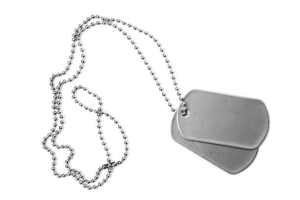Press Release | July 17, 2008
Soldiers Midding From The Vietnam War Are Identified (McKain, Chaney)
The Department of Defense POW/Missing Personnel Office (DPMO) announced today that the remains of two U.S. servicemen, missing from the Vietnam War, have been identified and will be returned to their families for burial with full military honors.
They are Chief Warrant Officer 2 Bobby L. McKain, of Garden City, Kan.; and Warrant Officer Arthur F. Chaney, of Vienna, Va., both U.S. Army. McKain will be buried on Aug. 11 in Arlington National Cemetery near Washington, D.C., and Chaney will be buried Sept. 16 in Arlington.
Representatives from the Army met with the next-of-kin of these men to explain the recovery and identification process, and to coordinate interment with military honors on behalf of the Secretary of the Army.
On May 3, 1968, these men flew an AH-1G Cobra gunship on an armed escort mission to support a reconnaissance team operating west of Khe Sanh, in Quang Tri Province, South Vietnam. Their helicopter was hit by enemy anti-aircraft fire, exploded in mid-air and crashed west of Khe Sanh near the Laos-Vietnam border. The crew of other U.S. aircraft flying over the area immediately after the crash reported no survivors, and heavy enemy activity prevented attempts to recover the men’s bodies.
In 1985, an American citizen with ties to Southeast Asian refugees turned over to U.S. officials human remains supposedly recovered from an AC-130 aircraft crash in Laos. While subsequent laboratory analysis disproved the association of the remains to the AC-130 crash, some of the remains were those of McKain and Chaney.
Between 1989 and 2003, Joint POW/MIA Accounting Command (JPAC) investigative teams working in Laos and Vietnam made five attempts to locate the crew’s crash site, but could not confirm the location.
Among other forensic identification tools and circumstantial evidence, scientists from JPAC and the Armed Forces DNA Identification Laboratory also used mitochondrial DNA and dental comparisons in identifying the remains.
For additional information on the Defense Department’s mission to account for missing Americans, visit the DPMO web site at http://www.dtic.mil/dpmo or call (703) 699-1169.
